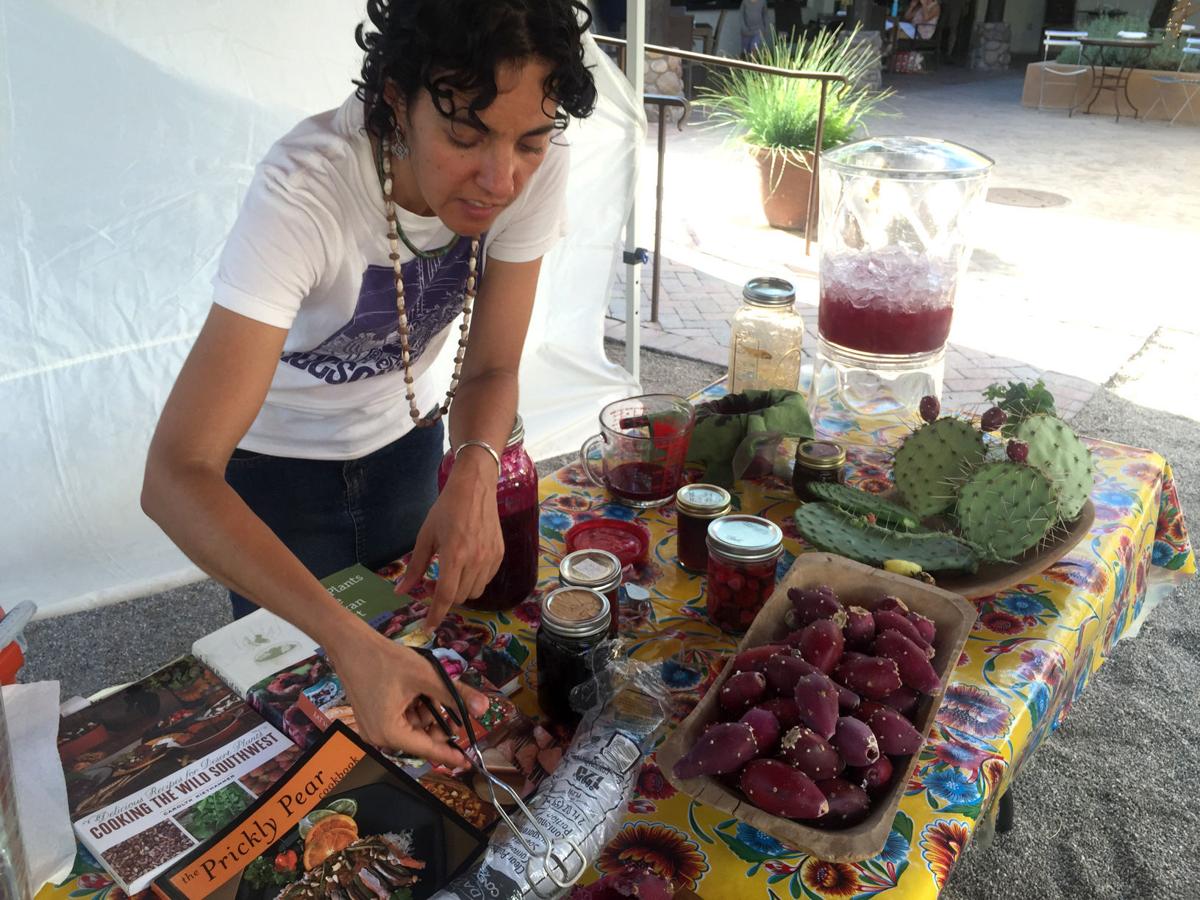One of my favorite summer memories was when three generations of my family would head out to the local blueberry farm and pick buckets of fruit from 50-year-old heritage trees. Sadly, the backyard grove in Wareham, Massachusetts, is long gone now.
I don’t know anyone who grows blueberries here in Tucson — they don’t like our alkaline soil — but you can still start your own family tradition: harvesting juicy prickly pear fruit.
So head out this weekend with the kids and pick some tasty “tuna,” the fruit that bites back if you’re not careful.
But it’s oh, so worth it. The ruby pink juice is nutritious, tasty and free for the taking.
Here are some tips from native foods guru Amy Valdés Schwemm, who delighted folks at the Santa Cruz River Farmers Market Thursday with her food demo — not to mention the crowd-pleasing samples of prickly pear lemonade. It was delish, even without tequila.
Harvesting tips
1. Watch out for the plant spines AND the glochids, those tiny but irritating spines that cover the fruit.
2. Use tongs to pluck the fruit. Gardening or leather gloves might be a good idea, too.
3. Bring a food-grade bucket or a couple of big bowls.
4. Harvest them now — most of the fruit is ripe by mid-August. Don’t pick any that have green ends; they should be a full ruby color. As you twist them off the pad, they should pop off immediately and dribble a little juice.
5. Don’t pick up fruit off the ground.
6. Leave at least one fruit per pad, so the desert critters can get their share and the plant can reproduce.
Preparation tips
Step 1:
After carefully rinsing them, here are three methods to choose from:
1. Put them in the blender and blend them whole, spines and all. This is the easiest method, Valdés Schwemm says. Strain (see below).
2. Freeze them whole for a day or so, then let them thaw and mash to release the juice. Strain.
3. Cook in a pot till soft, mash and then strain.
Step 2: Place a metal strainer over a bowl and line with a cloth napkin or clean T-shirt. Don’t use ordinary cheesecloth, she says, and be prepared to toss the cloth afterward as it will be full of spines.
Step 3: Make your favorite recipe or freeze the juice for later. (I like to use ice cube trays or muffin tins till they’re thoroughly frozen, and then pop them in a plastic bag for long-term storage.)
Step 4: Dump the leftover slurry into the desert or your yard, where the seeds can propagate.
What to make:
- Jam or jelly
- Syrup (for pancakes or ice cream)
- Pink lemonade
- Margaritas or mimosas
- Prickly pear peach chutney
- Prickly pear BBQ sauce
- Kombucha tea (a type of fermented tea)
- Prickly pear cheesecake
- And here’s a surprise — vinegar. Valdés Schwemm had samples of vinegar and it was savory with a nice bite. To make it, put the juice in a jar and add a couple of tablespoons of raw, organic vinegar from a health food store. Let it sit for a while; it will darken over time as it ferments.
If you want to eat the fruits whole, roast them over a gas flame to burn off the spines. Then peel and eat, or slice in half and scoop out the seeds before eating.





